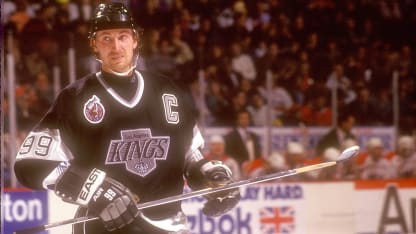As far as the draft picks are concerned, one way to determine their value in the trade is to add the career GVT of the players selected with them to Edmonton's totals.
In this case, the 1991 draft pick was the notable one, used to select Rucinsky, who had a 102.5 GVT in his NHL career. The 1989 draft pick (No. 18) was later traded to the New Jersey Devils. They chose forward Jason Miller, who played six NHL games. The Oilers used the 1993 draft pick (No. 16) to select defenseman Nick Stajduhar, who played two NHL games.
Adding Rucinsky's value to the trade makes it virtually even, with the Kings edging the Oilers 284.3-277.8 in GVT. Although it's impossible to place a value on $15 million prior to the salary-cap era, it's probably enough to place Edmonton over the top.
One of the wrinkles in this perspective is Rucinsky played two games with the Oilers before being traded to the Quebec Nordiques for goaltender Ron Tugnutt and forward Brad Zavisha on March 10, 1992. Zavisha played two NHL games, and Tugnutt was selected by the then-Mighty Ducks of Anaheim in the NHL expansion draft on June 24, 1993. So Rucinsky was of virtually no value to the Oilers.
That's why, at first glance, it seems ridiculous for a statistical model to include players who didn't remain with the team in the evaluation of a trade. It should simply compare only how players performed with their new teams, and not how they may have performed elsewhere.
However, consider the Aug. 7, 1992, trade in which goaltender Dominik Hasek was traded to the Buffalo Sabres by the Chicago Blackhawks for goaltender Stephane Beauregard and future considerations that ultimately took the form of the No. 90 pick in the 1993 draft.
Imagine if the Sabres had immediately traded Hasek to another team, prior to his winning the Vezina Trophy six times. Regardless of what they would have received, it wouldn't alter the fact that the Sabres got the better end of the original trade with the Blackhawks.
Furthermore, if future trades are going to be considered, then it's important to note Carson, right wing Kevin McClelland and a fifth-round pick in the 1991 draft were traded to the Detroit Red Wings for forwards Adam Graves, Petr Klima and Joe Murphy, as well as defenseman Jeff Sharples, on Nov. 2, 1989. This transaction played a significant role in Edmonton winning the Stanley Cup in 1990.
That's why the simplest approach is to ignore that Rucinsky was ultimately lost for no return, or that Carson was later involved in a great transaction, and to evaluate the Gretzky trade on the basis of the assets the Oilers received that day. In that regard, each team left with equal assets, but simply of a different kind.
In raw statistical terms, this trade was a win for both teams. The Kings received the superstar they needed to boost them into the status of instant contender. In return, the Oilers received the future assets they required to remain competitive long-term.


















